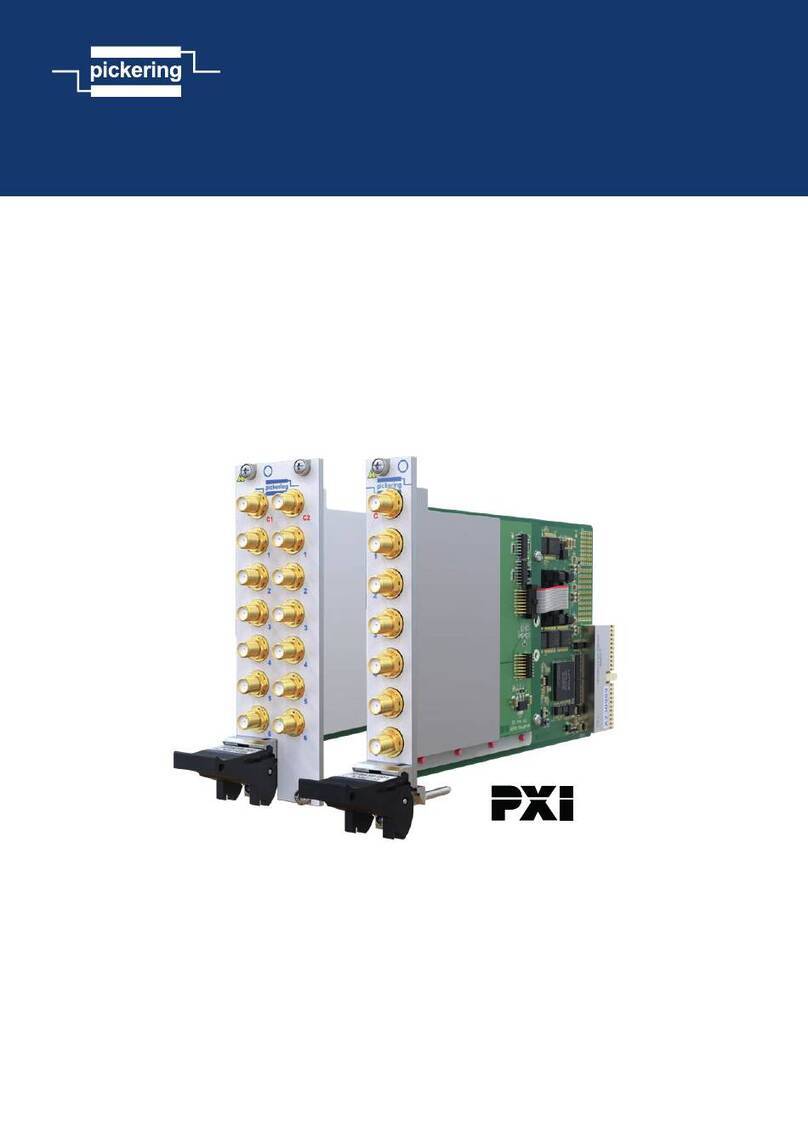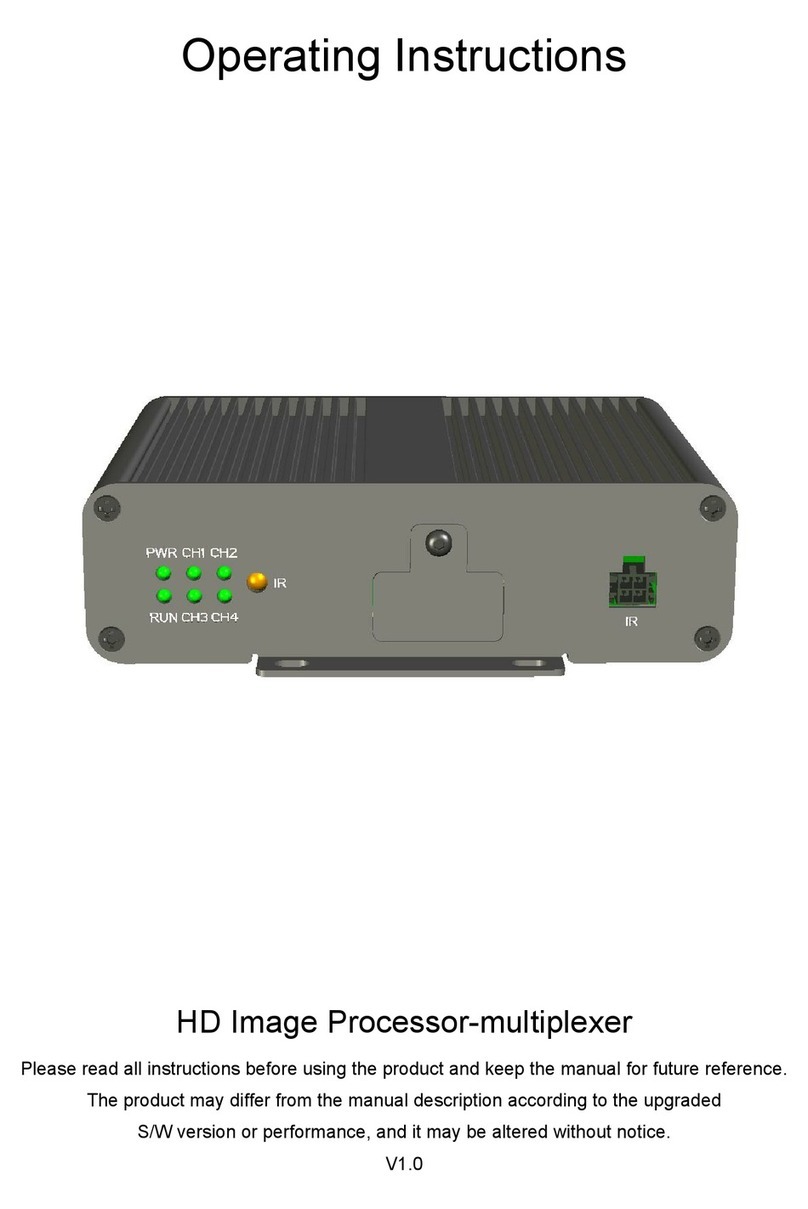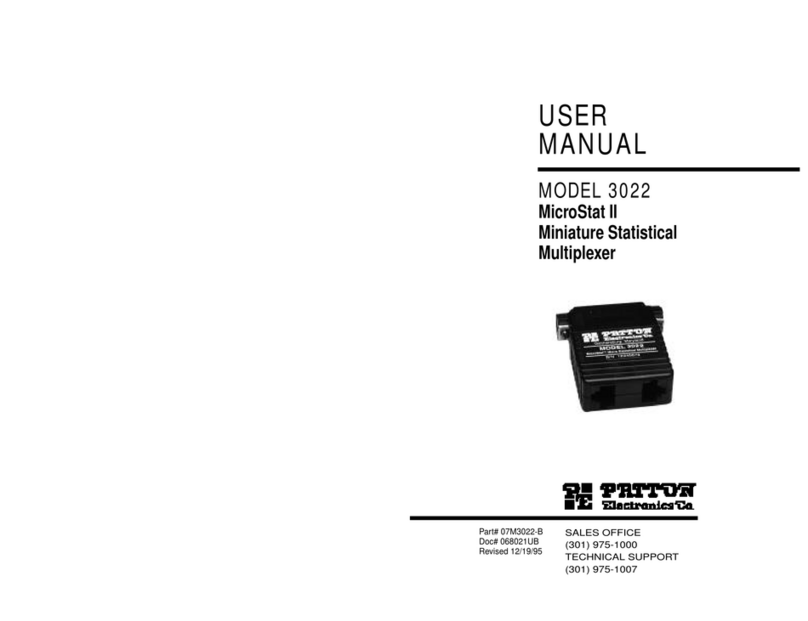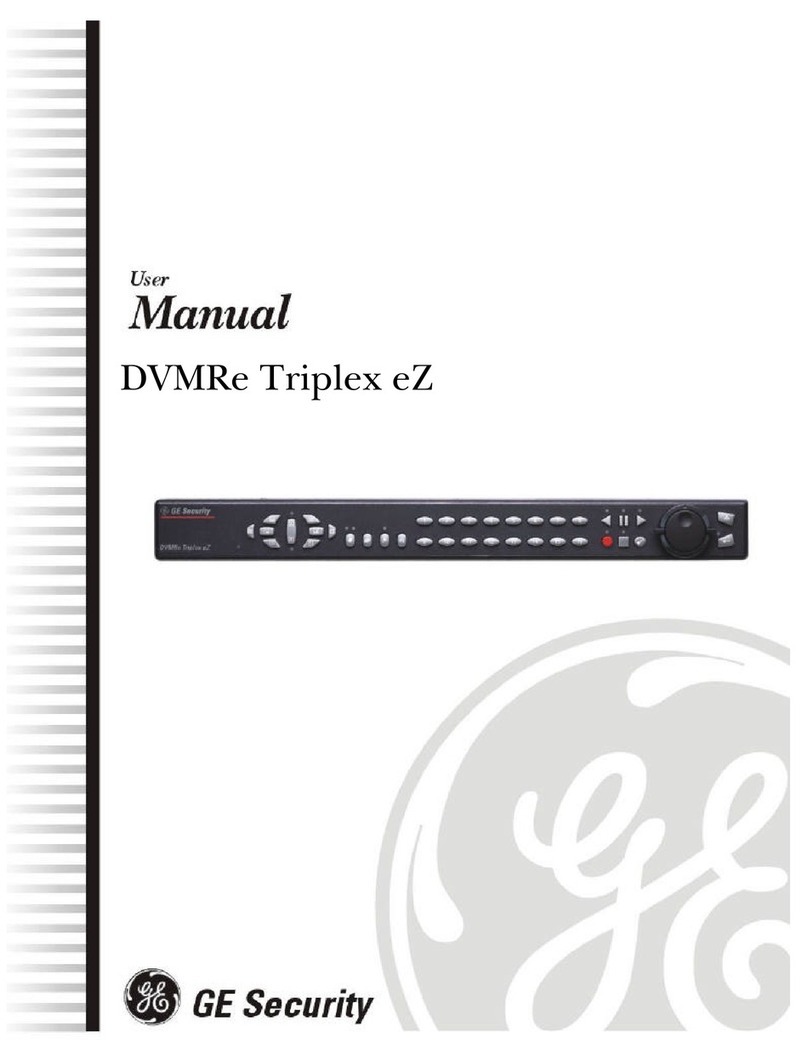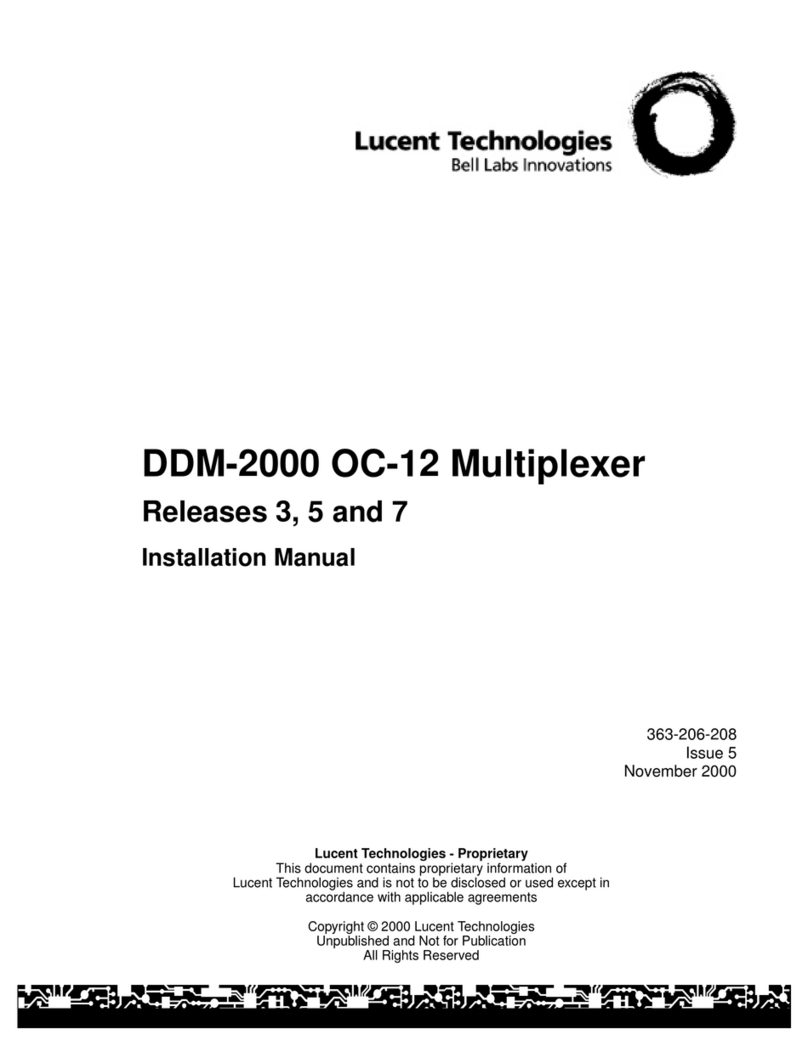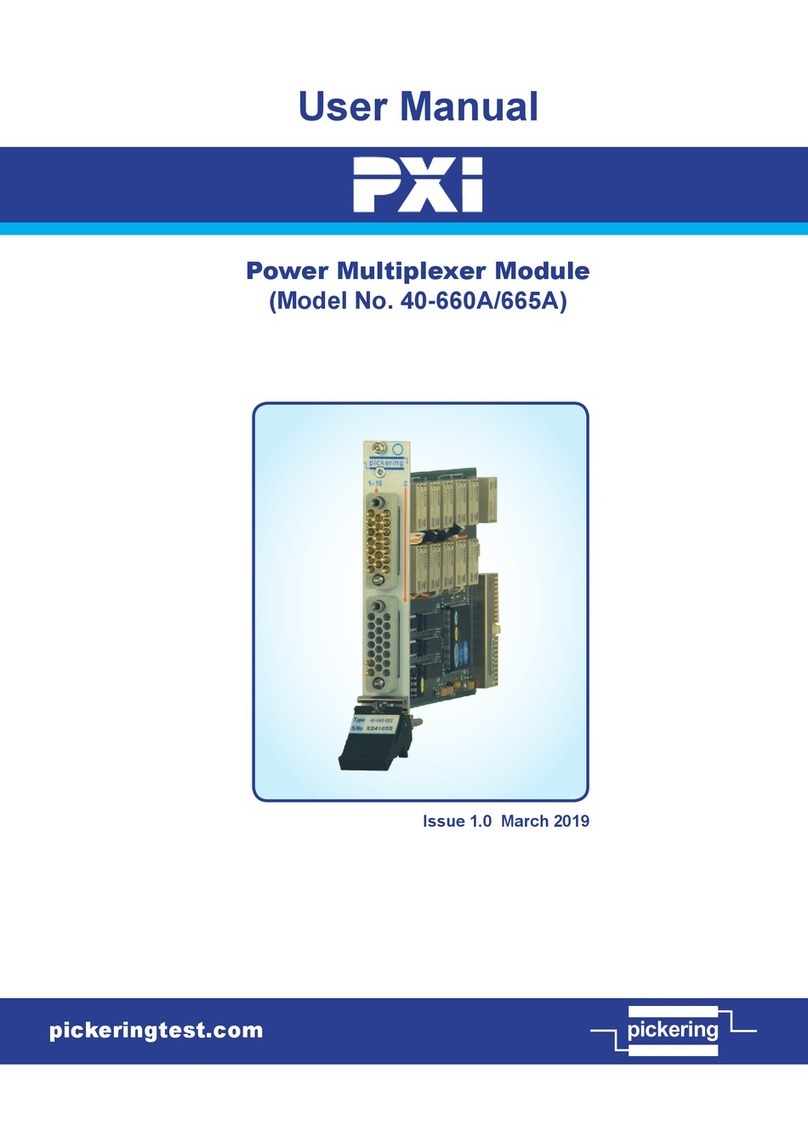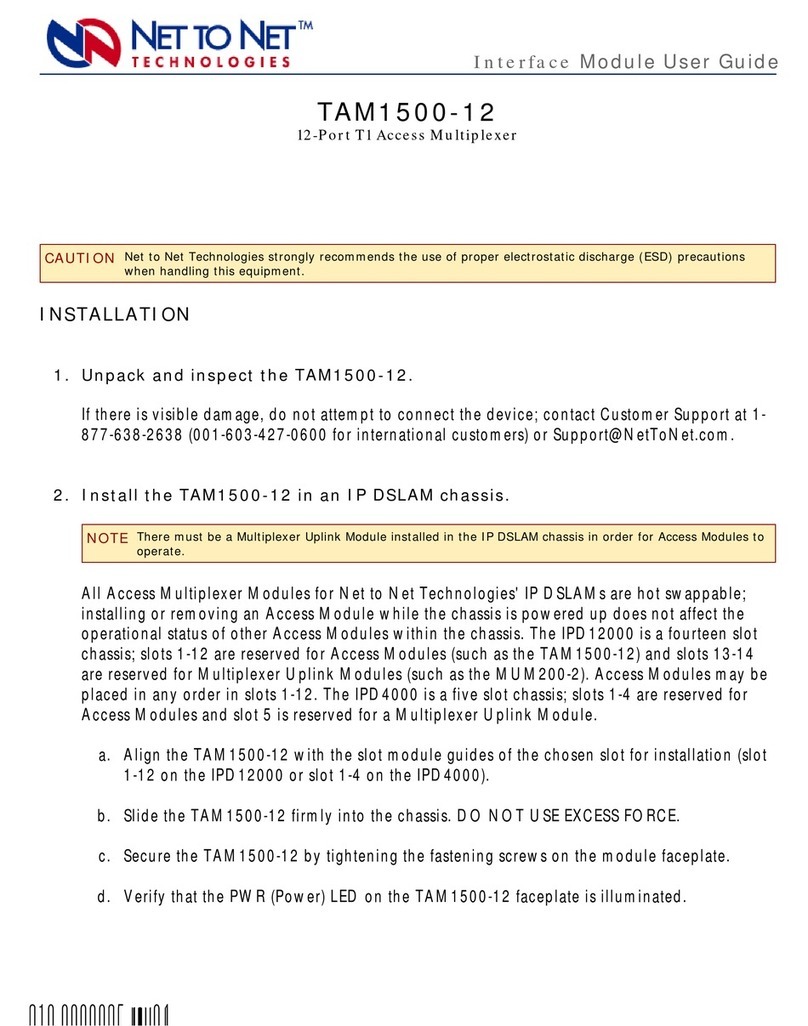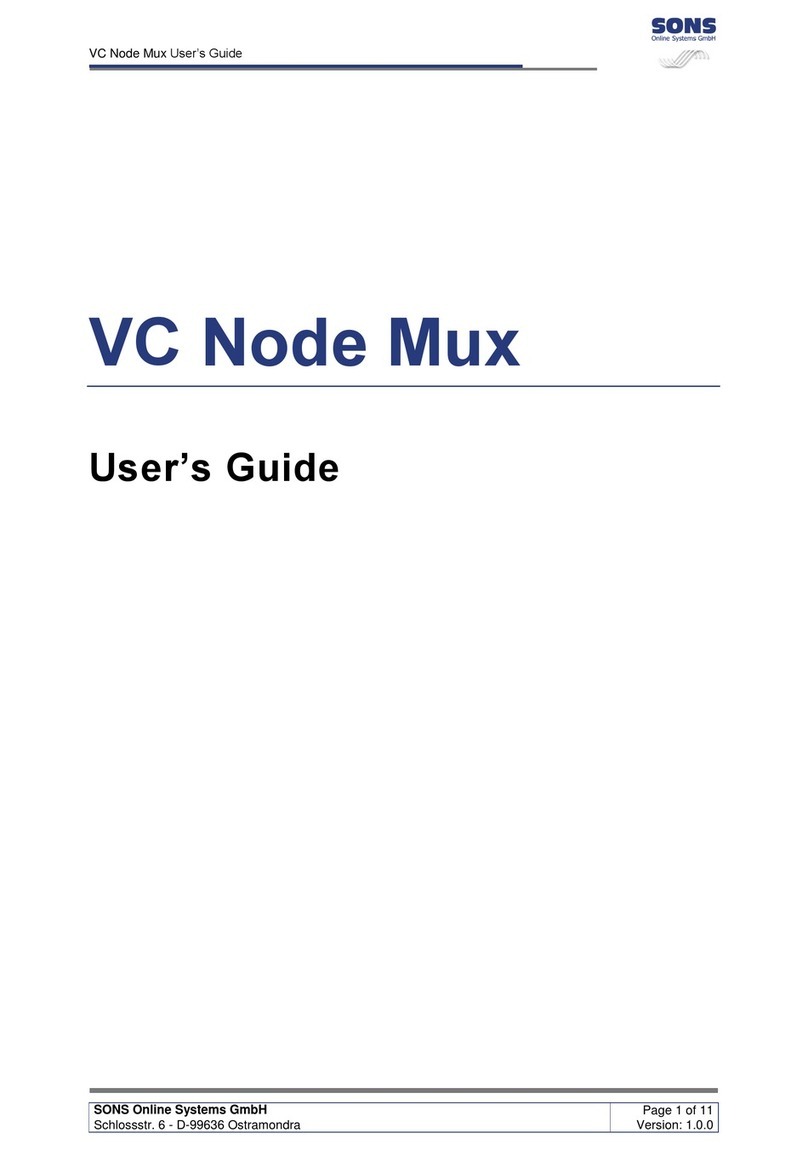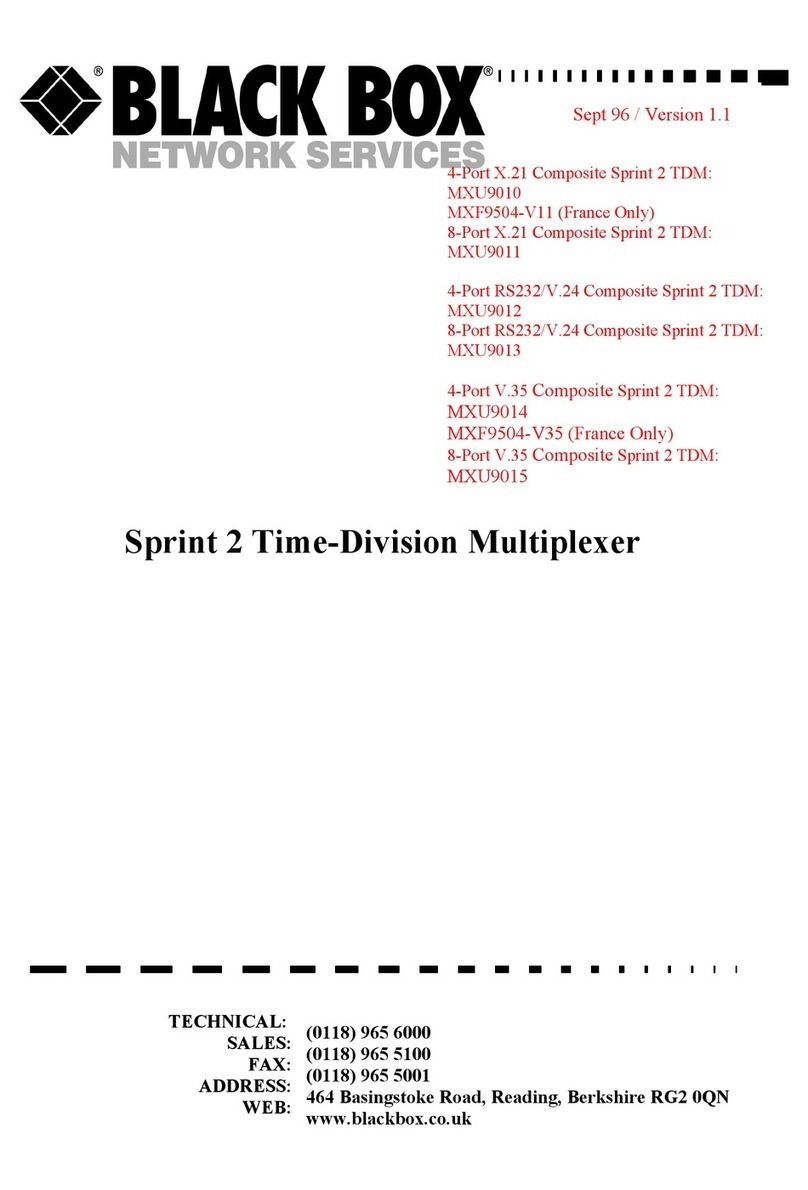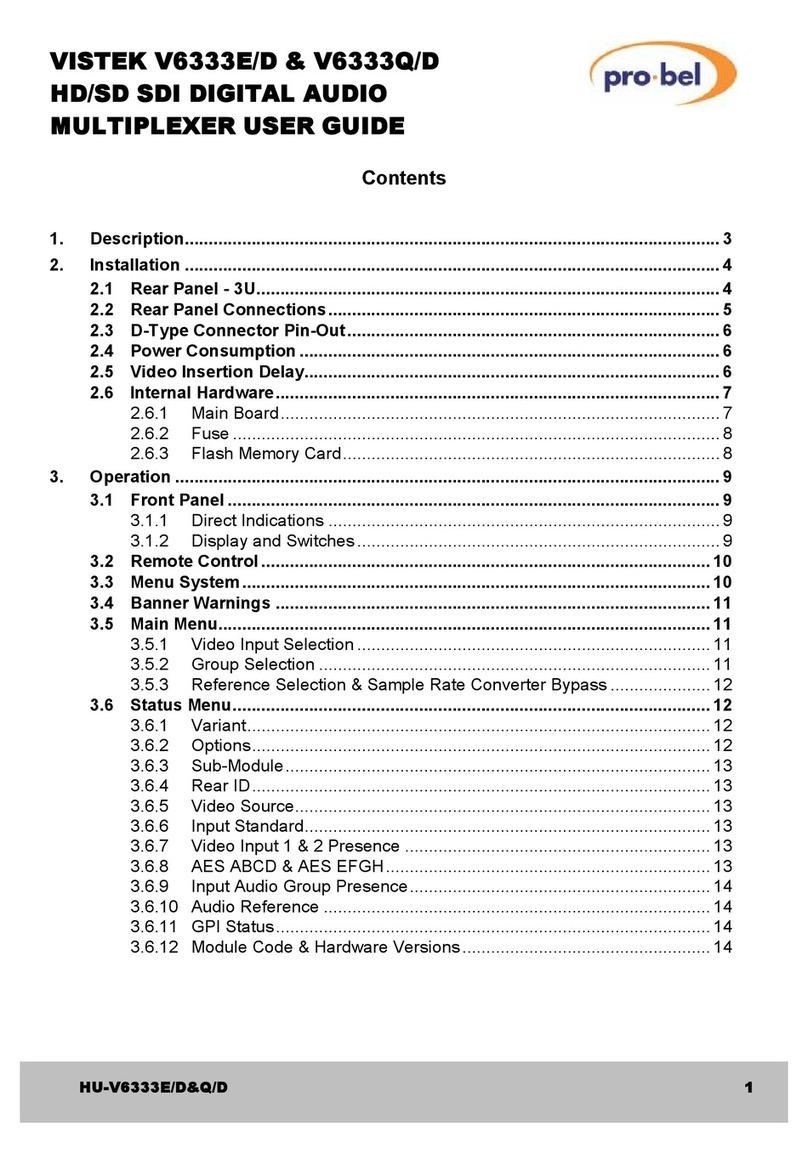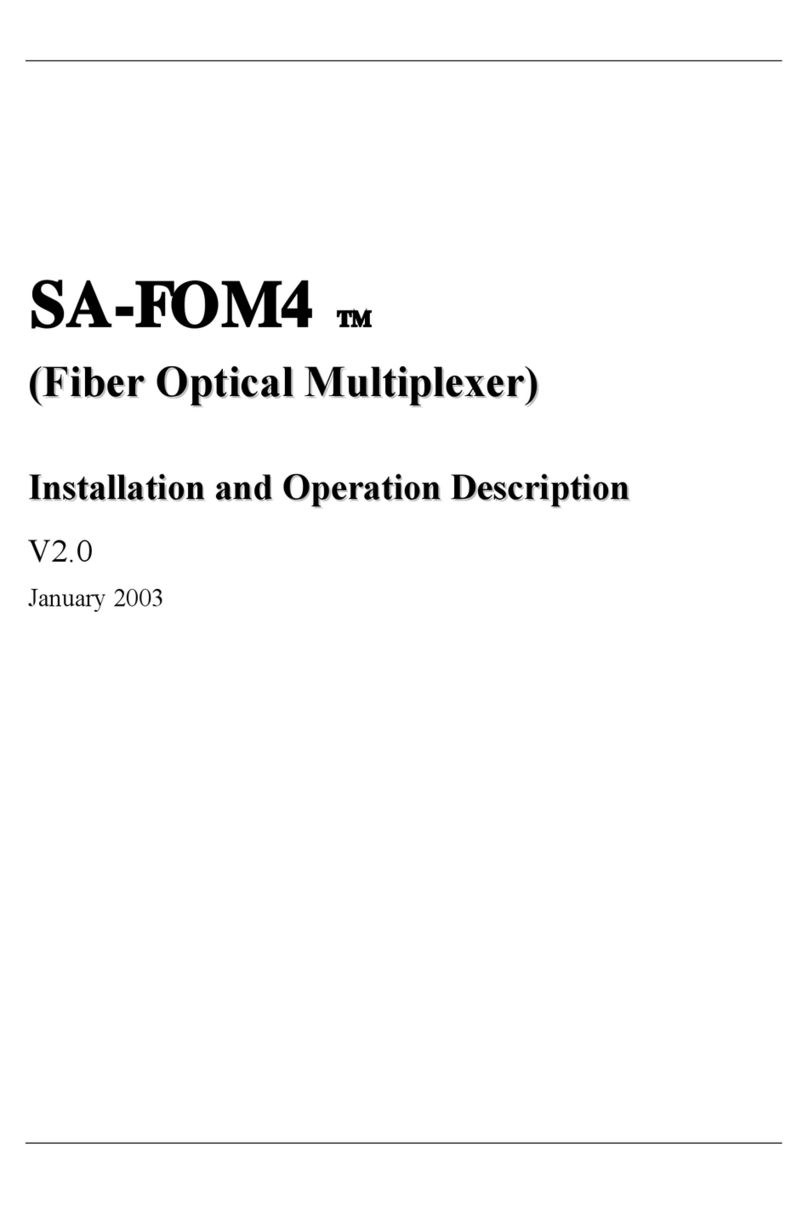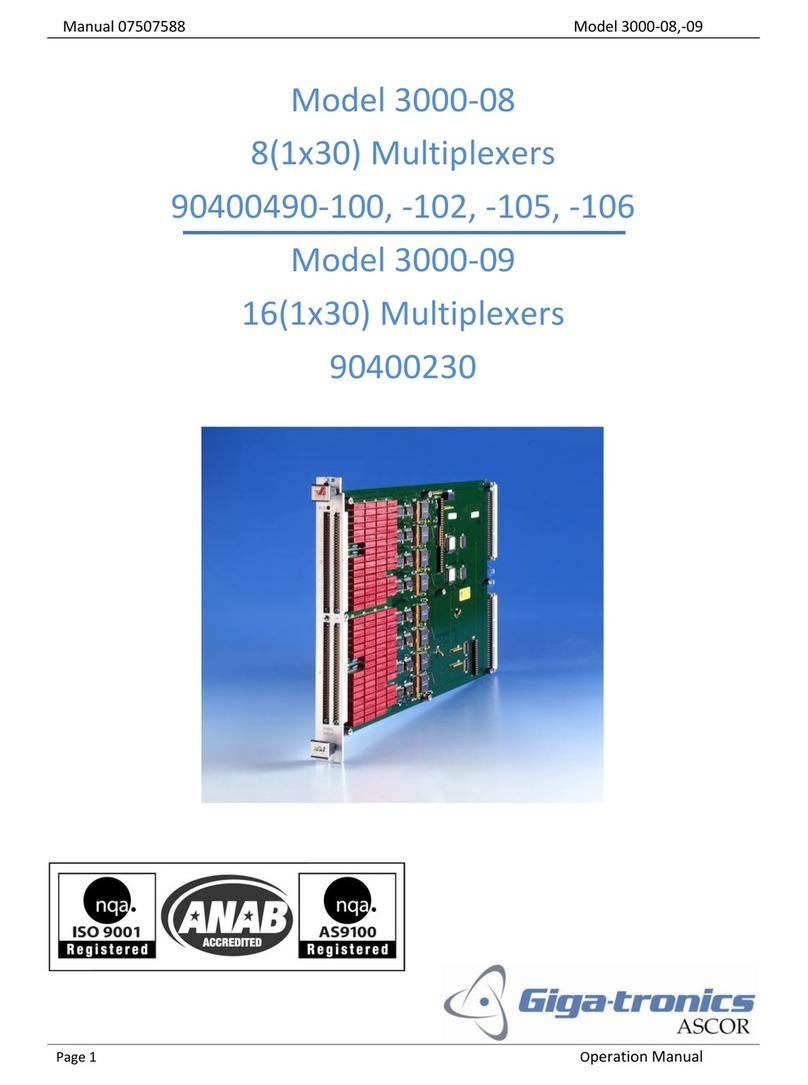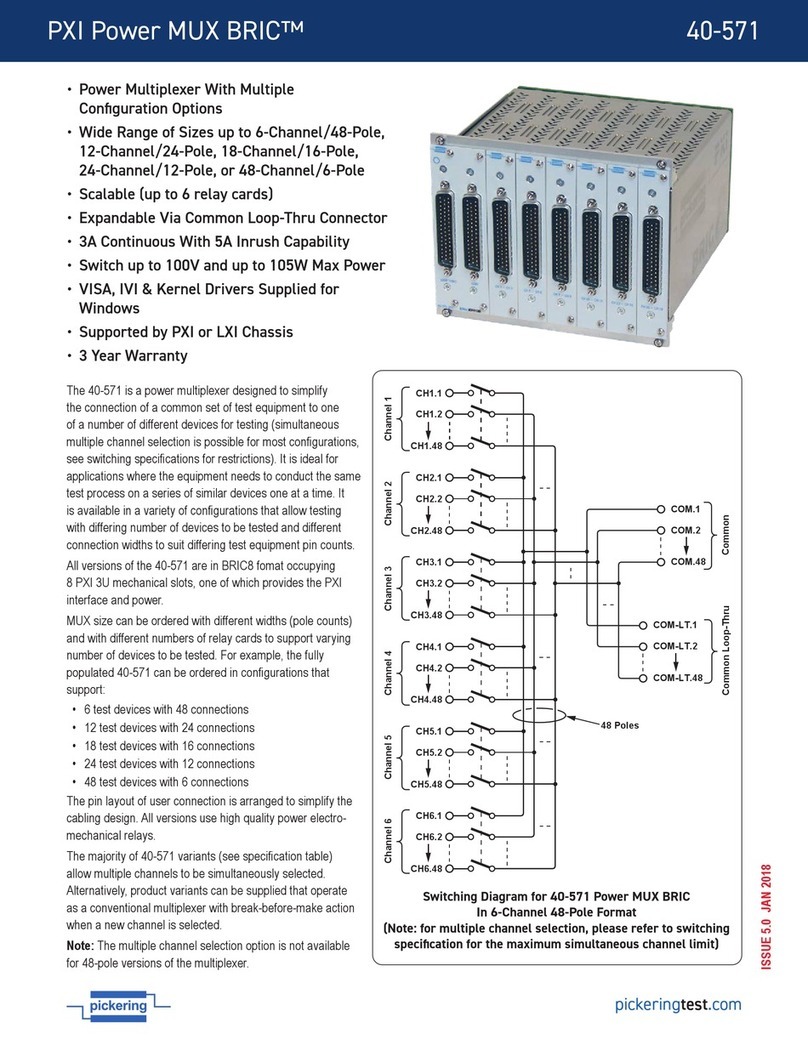
VISTEK V1633/A & V1633/D
sdiaudiomultiplexer
HU-V1633/A&D 9
3.4 Standard Indications
FourLEDson the front panel show the standard and format ofthe input signal. The unit can operate in
either525/60 or 625/50 formats, each ofwhich can be component (D1) or composite (D2). Onlyone LED
can be on at anyone time.
Ifthere isno SDI video input then all fourofthese LEDswill OFF.
3.5 Module Indication
TwoLEDs are used to indicate which ofthe two availablesub-modules is fitted. Normallyjustone ofthese
LEDs will be ON. It ispossible that afuture module will provide one AESinput and one analogue input, a so-
called hybrid module; in this case both LEDswill be ON.
3.6 Group Selections - D1
With aD1 signal, there can up to four groupsofembedded audio, each group carrying two AES streams.
The V1633A can onlyembed on one ofthese groups selected using a front panel rotaryswitch with markings
1to 4.The switch should be used to indicate whichof the groups hasbeen selected and not the GROUP
LEDsabove. Audio can onlybe embedded on agroup which is has no audio on it. An option is available on
S1 Switch1, to blankall groups priorto embedding; this isan all ornothing selection. NOTE:Appending
audio onto an SDI sourcealreadycontaining audio data fromaminorityof othermanufacturersmultiplexers
which do not conformfullyto the SMPTEspec. maycauseproblemsifthe ancillarydata space is not pre-
blanked.
The ‘Group’ LEDs indicate which groups are occupied on the output signal, and not which group hasbeen
selected. Thus anynumberofthe LEDsmaybe ON. If there is an error on the input audio, or no signal is
present, the group light on the selected group will flash.
3.7 Reference Selection
Manyinstallationshavedifficultywith embedded audio, whichcan often be traced to the frequencyand
phase relationship between the video and AES audio. UnlikemanySDI De-multiplexersthe V1633A does
not require the signals to be synchronous.In fact it isquite possible for the SDI video and the two
multiplexed audio data streamsto have no defined relationship.
Toassist in operational installation the V1633A can be used to resample the audio to 48kHzwith respect to
various reference signals. Thismayhelp ifthe audio isto be de-multiplexed at alaterstage byanother
manufacturer’sde-multiplexer. The reference sourcemaybe either an AESsignal or avideo signal. The
video reference mybe eitherthe SDI input signal itselfor an external analogue black and burst reference.
The front panel hasa three-position selection switch used asfollows:
POSn Definition Description
VID/SDI Video Ref. and SDI I/P Use one ofthe video references. The choicebetween Ref.
and SDI is made byswitch 4 on the internal DIL switch. IfRef.
isselected but not present, then SDI will be used.
DCTDirect Pass AES without synchronisation.
AESAES Ref. Use the external AES as areference. If this is absent then the
SDI input will be used. An AESreference of48kHzmustbe
used.













